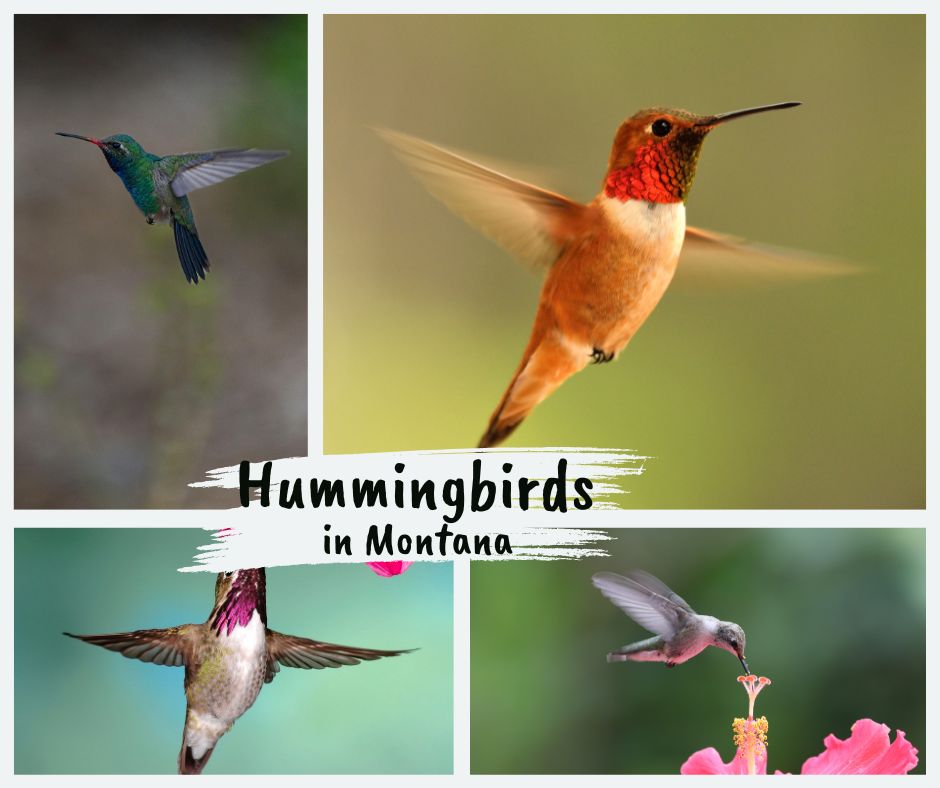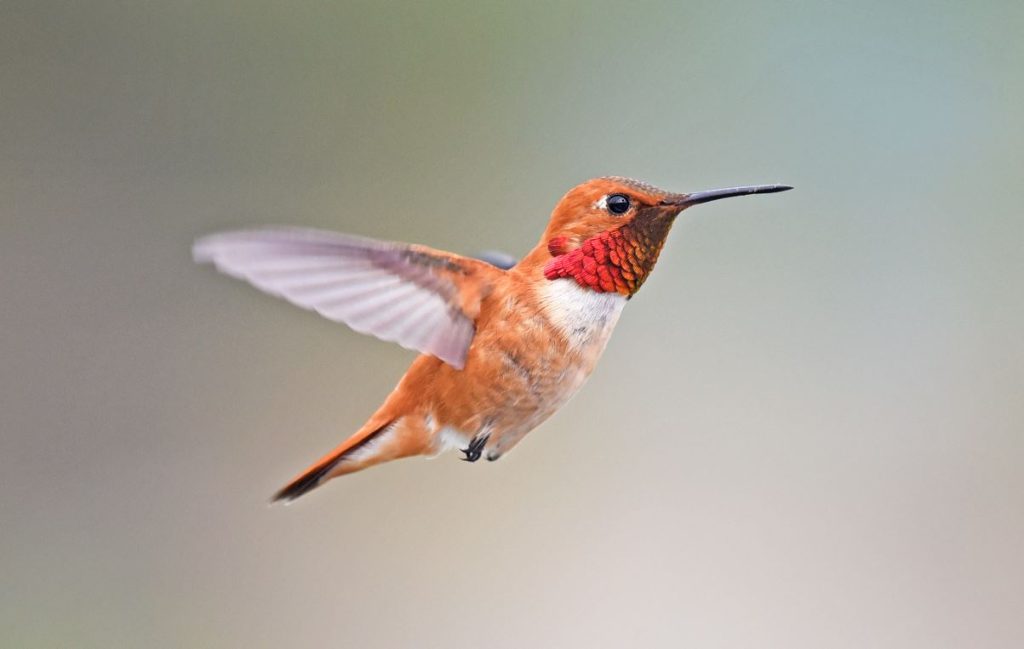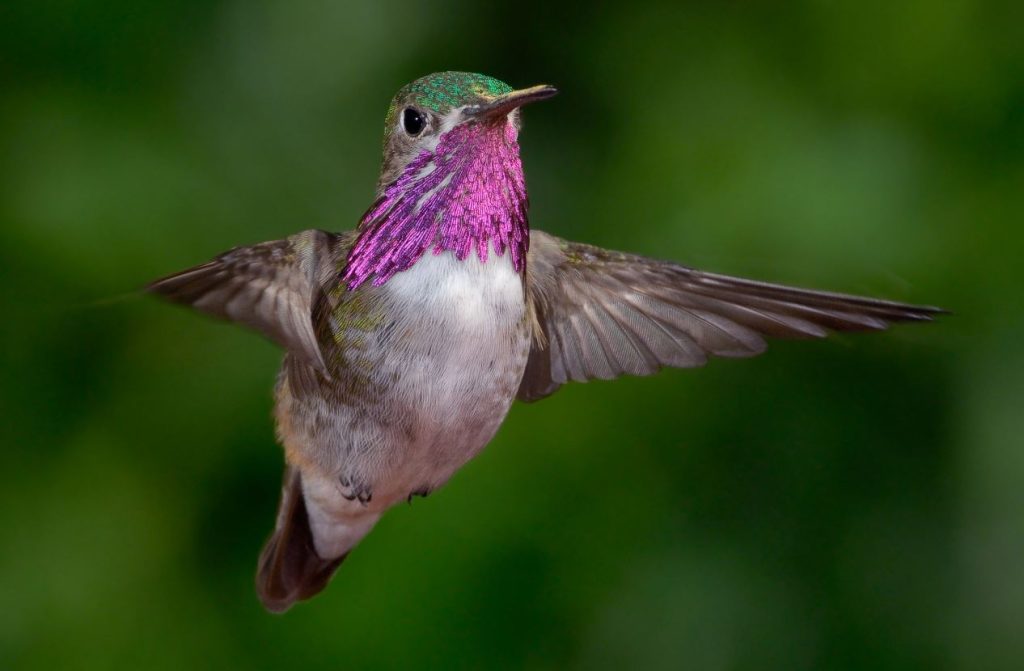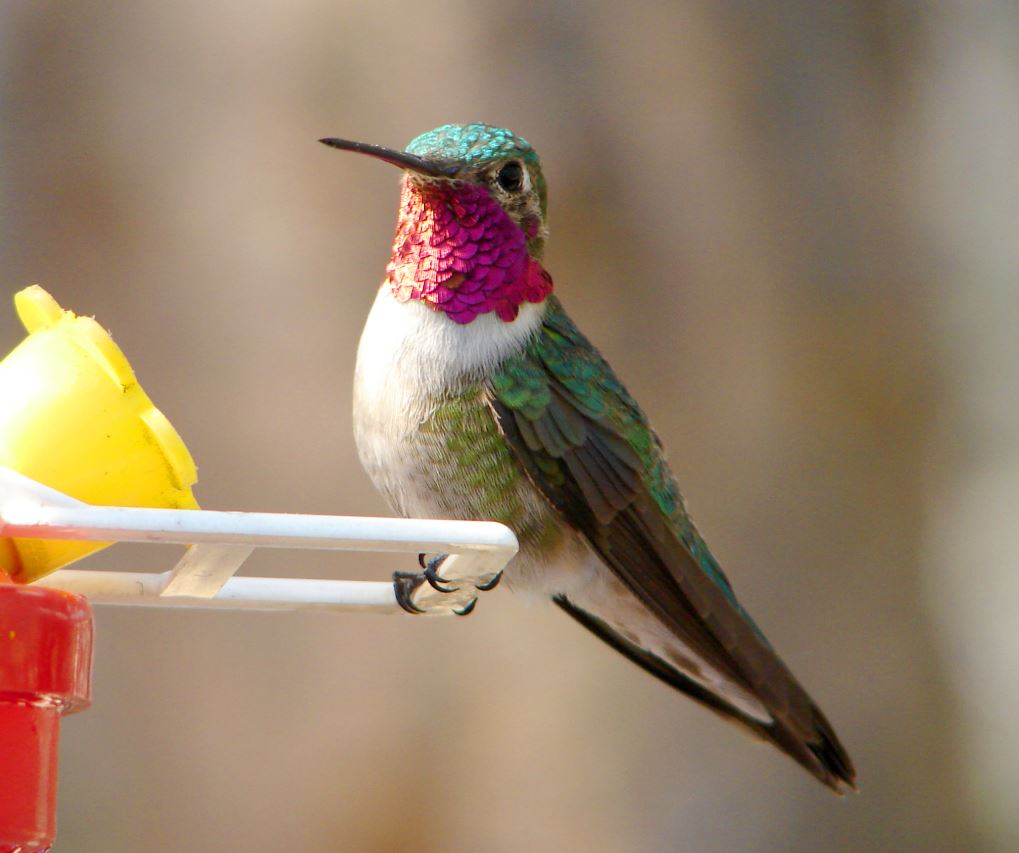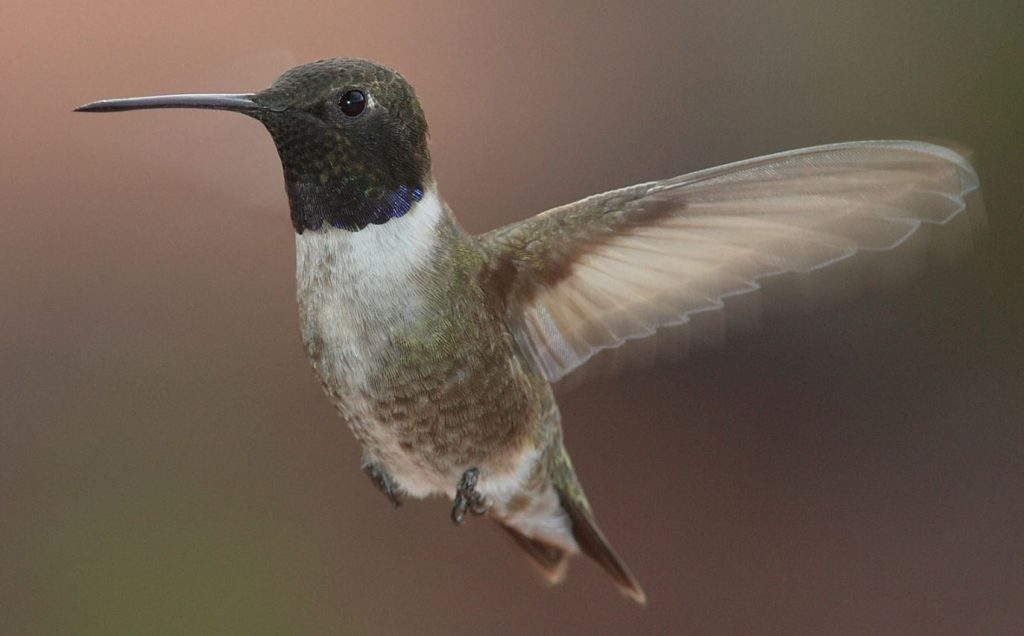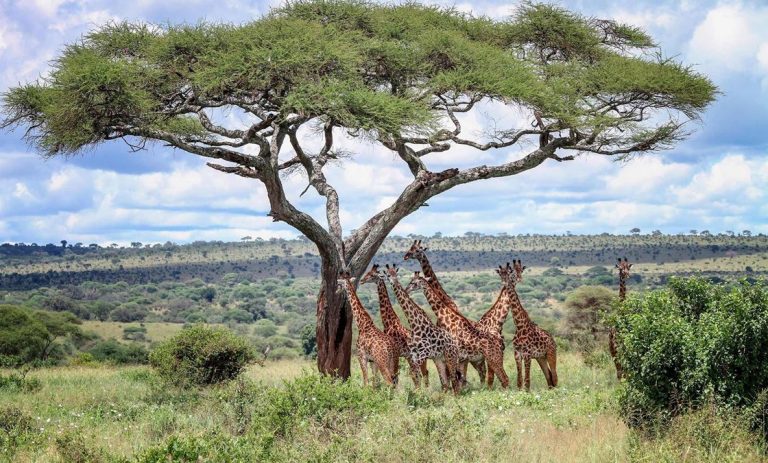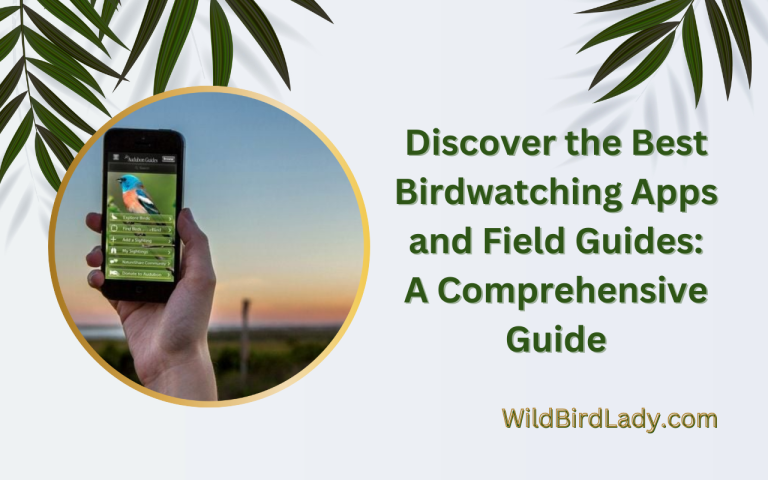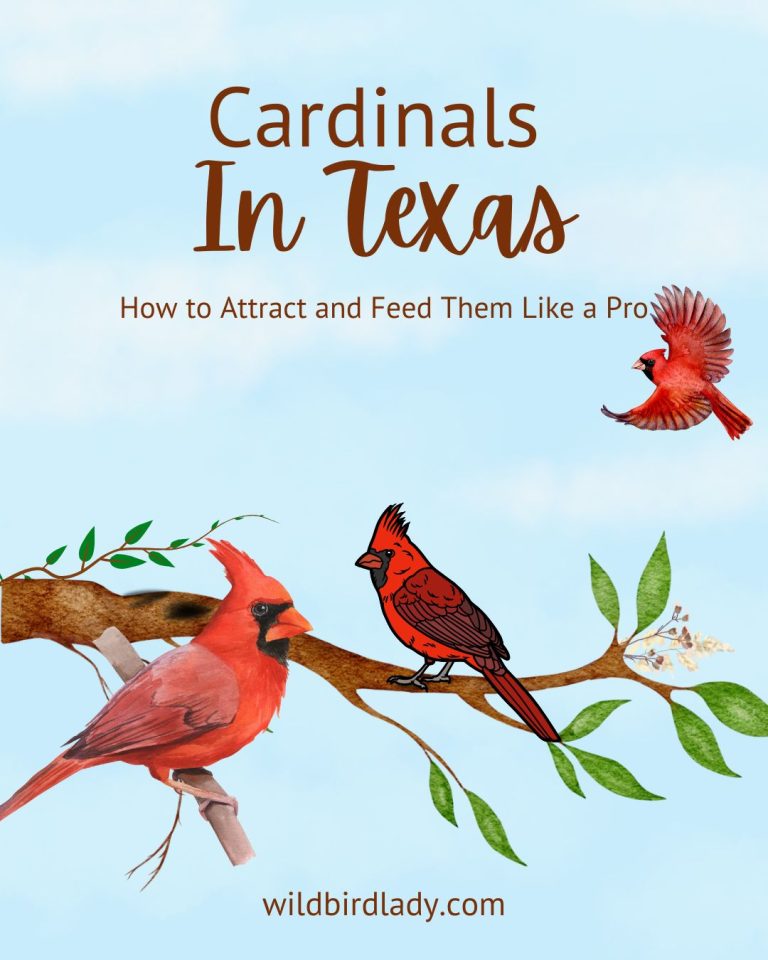Hummingbirds in Montana: A Complete Guide to ID, Migration, and Feeding Tips
I remember the first hummingbird I ever saw in Montana. It was early June, just as the lilacs were blooming. A flash of green zipped past me in the foothills near Bozeman, hovering like a spirit over the blossoms before vanishing into thin air. For a second, it didn’t feel real—more like a trick of the light than a bird.
That’s the magic of hummingbirds.
In Montana, these tiny aerial marvels are fleeting but unforgettable. From spring through late summer, they grace our gardens, mountain meadows, and riparian forests with their presence. In this guide, I’ll walk you through how to identify the hummingbirds of Montana, understand their migration patterns, and feed them responsibly to help them thrive.
1. How Many Hummingbird Species Are in Montana?
Montana may be far from tropical rainforests, but during the warmer months, it hosts at least four regularly observed hummingbird species, and a few rarities.
Common Species:
- Rufous Hummingbird (Selasphorus rufus)
- Calliope Hummingbird (Selasphorus calliope)
- Broad-tailed Hummingbird (Selasphorus platycercus)
- Black-chinned Hummingbird (Archilochus alexandri)
Rare Visitors:
- Anna’s Hummingbird (occasional sightings)
- Costa’s Hummingbird (extremely rare)
These species are primarily migrants—they arrive in spring and leave by early fall. Each has its own charm, range, and identifying features.
2. How to Identify Montana’s Hummingbirds
Rufous Hummingbird
ID:
- Males: Fiery orange back and belly, iridescent red throat
- Females: Green above, rufous flanks and tail
Behavior:
- Aggressive and territorial
- Often chases off other hummingbirds at feeders
Range in Montana:
- Common throughout western and central Montana during summer
Tip: Look for Rufous Hummingbirds in mid-to-late July during southbound migration—they dominate mountain feeding stations.
Calliope Hummingbird
ID:
- Males: Smallest bird in North America, with magenta “whisker-like” throat stripes
- Females: Pale, with buffy flanks and green upperparts
Behavior:
- Surprisingly bold despite its size
- Nests at high elevations in subalpine meadows
Range in Montana:
- Widespread in western mountains, often near forest edges and wildflower meadows
Fun fact: A Calliope Hummingbird weighs less than a penny but migrates thousands of miles each year.
Broad-tailed Hummingbird
ID:
- Males: Rose-red throat (gorget), metallic green back, long tail
- Females: Similar to Calliope but slightly larger with pale speckled throat
Behavior:
- Makes a loud wing-trill during flight
- Frequently visits mountain meadows and backyards
Range in Montana:
- Found mostly in western and southwestern regions at mid to high elevations
Listen for the distinctive buzzing wings of a male in flight—it’s a giveaway for Broad-tailed.
Black-chinned Hummingbird
ID:
- Males: Dark head with a subtle violet chin stripe in direct light
- Females: Dull green back, pale throat, grayish belly
Behavior:
- Less aggressive than Rufous, often coexists at feeders
- Prefers lower elevations and riparian areas
Range in Montana:
- More common in eastern and southern Montana, especially along rivers and canyons
3. Hummingbird Migration in Montana
Migration is perhaps the most remarkable part of the hummingbird life cycle. These birds migrate thousands of miles from Central America and Mexico to their breeding grounds in the northern U.S. and Canada—and back again.
Spring Arrival:
- Starts in late April to early May, depending on elevation and weather
- Males arrive first to establish territories
- Calliope and Black-chinned Hummingbirds are typically the earliest to appear
Fall Departure:
- Southbound migration peaks in late July to early September
- Rufous Hummingbirds head out earlier than others, often by August
As a rule of thumb, keep feeders up until two weeks after the last sighting to support late migrants.
4. Where to See Hummingbirds in Montana
Whether you’re in the Rockies or the rolling plains, there are plenty of excellent locations to observe hummingbirds:
Best Spots in Montana:
- Glacier National Park (especially Many Glacier area in early summer)
- Bitterroot Valley (backyard feeders and wildflower-filled meadows)
- Big Hole and Blackfoot Valleys
- Yellowstone River corridors (for Black-chinned sightings)
- National Bison Range near Moiese (great mix of habitat)
Early morning and early evening are prime hours for hummingbird activity, especially around blooming plants and water sources.
5. Best Flowers and Feeders for Hummingbirds in Montana
To attract hummingbirds to your backyard, offer both natural nectar sources and clean, well-maintained feeders.
Native Plants That Attract Hummingbirds:
- Scarlet gilia (Ipomopsis aggregata)
- Western columbine (Aquilegia formosa)
- Trumpet honeysuckle
- Bee balm (Monarda)
- Penstemons
- Indian paintbrush
Want to make your yard a hummingbird haven? Don’t miss my full guide on Plants That Attract Hummingbirds — featuring native flowers that thrive in Montana and keep these tiny visitors coming back all season long.
Feeding Tips:
Homemade Nectar Recipe:
- 1 part white sugar to 4 parts water
- Boil the water, dissolve the sugar, let it cool
- Do not add red dye—it’s unnecessary and potentially harmful
Feeder Care Guidelines:
- Clean every 2–3 days (daily during hot spells)
- Place feeders in the shade
- Hang multiple feeders to reduce territorial disputes
A clean feeder can be a literal life-saver during late summer when natural nectar dries up.
6. Hummingbird Behavior to Watch For
Hummingbirds are endlessly fascinating once you start paying attention:
- Hovering skills: They can fly in place, backward, and even upside down briefly
- Feeding frenzy: Rufous males often chase others fiercely, even when there’s enough nectar for all
- Courtship: Males perform skydiving displays, making sharp “chirps” with their wings
- Perching: Despite being fast, they rest frequently—look for them on thin twigs or wires
7. Conservation Note: Tiny Birds, Big Challenges
While none of Montana’s hummingbird species are endangered, their populations face pressures from:
- Habitat loss (especially in overwintering grounds)
- Pesticide use (which kills off insects they eat)
- Climate change (altering flower bloom timing and migration cues)
- Window collisions
According to Audubon’s climate report, several hummingbird species may lose substantial breeding range by 2080 due to warming temperatures.
You can help by:
- Planting native flowers
- Avoiding pesticides
- Keeping feeders clean
- Educating others about the importance of pollinator habitats
Final Thoughts: Moments That Hover
In a state as vast and wild as Montana, it’s easy to be drawn to the grand—the grizzlies, the peaks, the storms. But there’s something deeply special about the quiet visit of a hummingbird. It’s a moment of stillness wrapped in movement. A reminder that the smallest visitors can leave the biggest impressions.
Whether you’re watching from a mountain trail or your kitchen window, remember: these birds have traveled thousands of miles just to be here.
The least we can do is notice.
FAQs
❓What types of hummingbirds live in Montana?
Montana hosts four common species: Rufous, Calliope, Broad-tailed, and Black-chinned Hummingbirds. All are migratory and visit during spring and summer.
❓When do hummingbirds migrate through Montana?
Hummingbirds begin arriving in late April or early May and typically depart by early September. Rufous Hummingbirds are often the first to leave, usually by August.
❓What’s the best nectar recipe for feeding hummingbirds?
Mix 1 part white sugar with 4 parts water. Boil the mixture, let it cool, and never add red dye. Clean feeders every 2–3 days to prevent mold and bacteria.
❓Do hummingbirds stay in Montana year-round?
No. All hummingbird species in Montana are migratory, spending winter in Mexico or the southwestern U.S. They return each spring to breed and feed during summer.
❓Which native plants attract hummingbirds in Montana?
Flowers like scarlet gilia, columbine, bee balm, and penstemon are rich in nectar and ideal for attracting hummingbirds. These plants also support pollinators and local ecosystems.
❓Can I attract more than one hummingbird species to my yard?
Yes. Planting a diverse range of native flowers and offering multiple feeders can help attract and support different species throughout the season.

